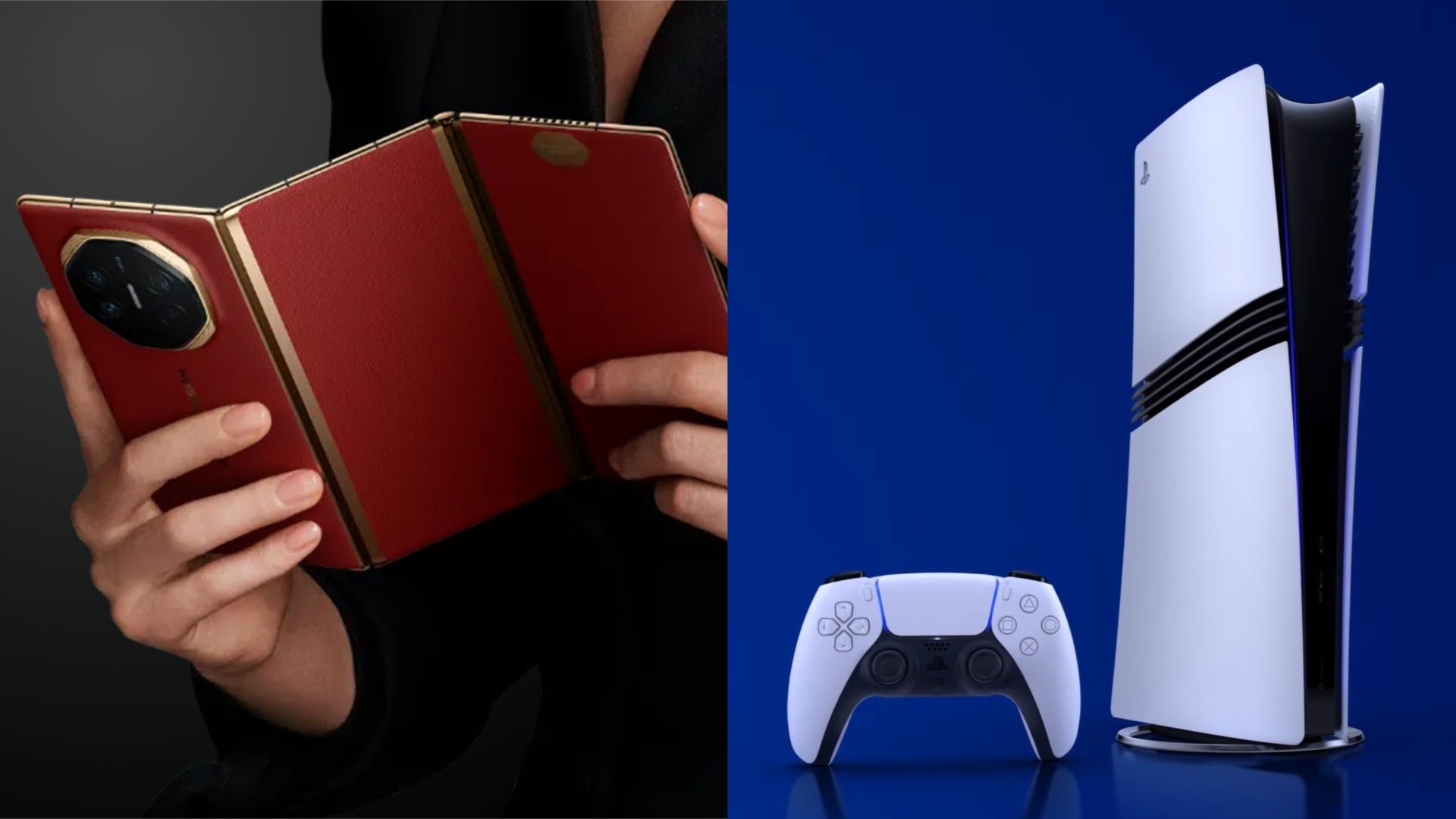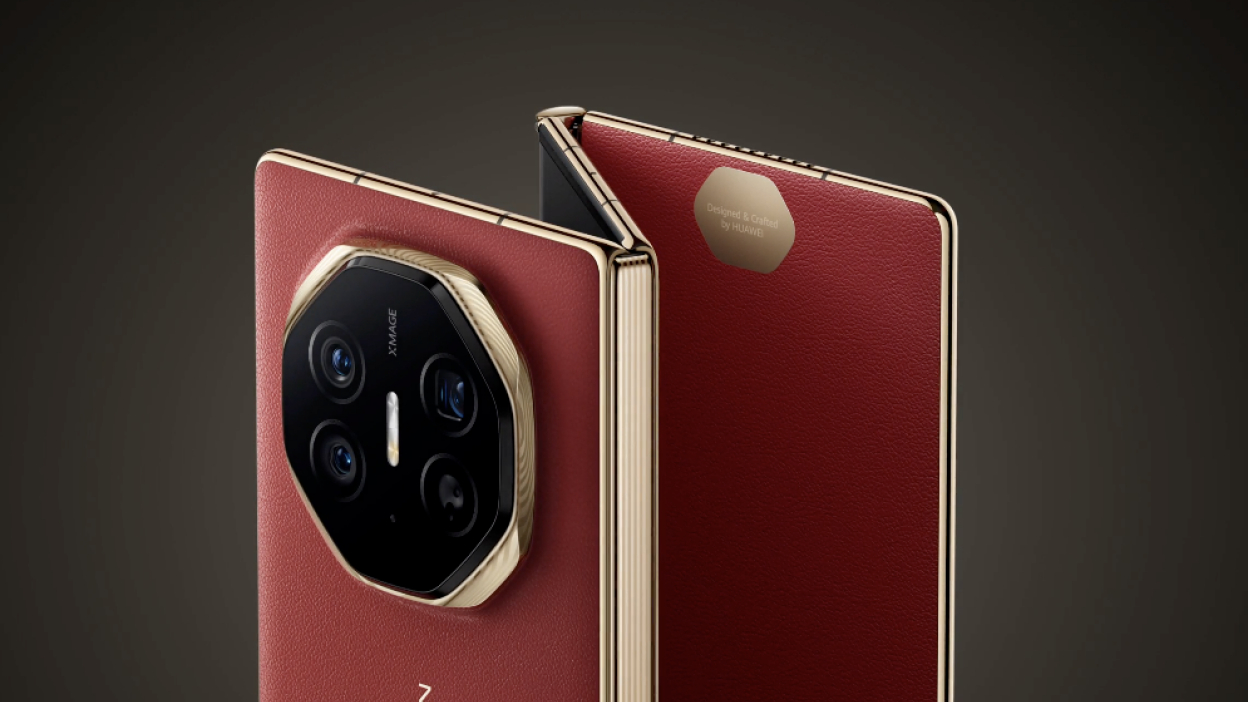
We’ve been reporting on leaks and official teasers surrounding the tri-folding Huawei Mate XT for several months now, and the dual-hinged, triple-screen phone is finally here.
Huawei launched the Mate XT at a glitzy showcase in the hours following Apple’s iPhone 16 event, confirming that the phone’s OLED display measures 6.4 inches when collapsed and a whopping 10.2 inches when fully unfolded. Of course, Huawei also confirmed the price of its new flagship smartphone at said launch event, and it’s enough to make your eyes water.
The Huawei Mate XT – which is currently only available in China – starts at 19,999 yuan (around $2,810 / £2,150 / AU$4,220) for the model with 256GB of storage. That price rises to 21,999 yuan (around $3,090 / £2,365 / AU$4,645) for the model with 512GB of storage, and higher still to 23,999 yuan (around $3,375 / £2,580 / AU$5,065) for the model with 1TB of storage. All three models ship with 16GB of RAM.
For context, the cheapest version of the Samsung Galaxy Z Fold 6 – aka the most expensive of the best foldable phones in 2024 – costs $1,899.99 / £1,799 / AU$2,749. Heck, the newly announced PlayStation 5 Pro costs $699.99 / £699.99 / AU$1,199; you could buy four of those for the same price as the cheapest Huawei Mate XT. Or 5,620 Twinkies – whatever floats your boat.

So, yes, the latest foldable innovation to emerge from China costs an arm and a leg – but innovation comes at a price in almost every product category. The Apple Vision Pro infamously cost $3,499 / £3,499 / $5,999 at launch (and still does), while many of the best mirrorless cameras cost even more than that (the Sony A7R V, for instance, retails for $3,900 / £4,000 / AU$5,900).
The difference between, say, the Apple Vision Pro and the Huawei Mate XT is that consumers – in China, at least – seem genuinely interested in buying Huawei’s never-before-seen foldable. Chinese retailer Vmall, for instance, reports (via The Verge) that 3.7 million Huawei Mate XT preorders were placed before pricing was even announced.
As for what other specs the Mate XT boasts beyond its Z-shaped folding form factor (which, strictly speaking, is bi-folding rather than tri-folding), the phone comes with a 5,600mAh battery and support for 66W wired charging and 50W wireless charging.
Get daily insight, inspiration and deals in your inbox
Sign up for breaking news, reviews, opinion, top tech deals, and more.

On the camera front, the Mate XT gets a three-lens rear setup comprising a 50MP main lens, a 12MP ultra-wide lens, and a 12MP periscope lens, while an 8MP selfie camera rounds out the phone’s photography offering. Under the hood, the Mate XT is reportedly powered by the Kirin 9010 5G chipset, though Huawei hasn’t yet confirmed as much.
As mentioned, the Huawei Mate XT is currently only available in China, and although Huawei is now technically free to trade in international markets, we don’t think we’ll see the company’s latest foldable released elsewhere.
That said, there’s every chance that the likes of Samsung, Google, and OnePlus will take inspiration from the Mate XT, so we’ll be keeping our eyes peeled for rumors of a tri-folding competitor in the coming year.
You might also like
- Apple iPhone 16 event – everything Apple announced and 16 things we learned
- Hands on: iPhone 16 review – new buttons, new processor, more 'Pro'
- Hands on: iPhone 16 Pro review – max zoom without the Max name

Axel is TechRadar's UK-based Phones Editor, reporting on everything from the latest Apple developments to newest AI breakthroughs as part of the site's Mobile Computing vertical. Having previously written for publications including Esquire and FourFourTwo, Axel is well-versed in the applications of technology beyond the desktop, and his coverage extends from general reporting and analysis to in-depth interviews and opinion. Axel studied for a degree in English Literature at the University of Warwick before joining TechRadar in 2020, where he then earned an NCTJ qualification as part of the company’s inaugural digital training scheme.